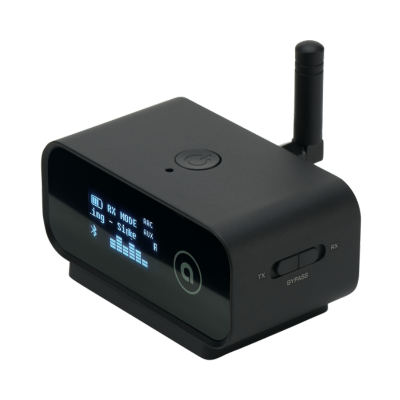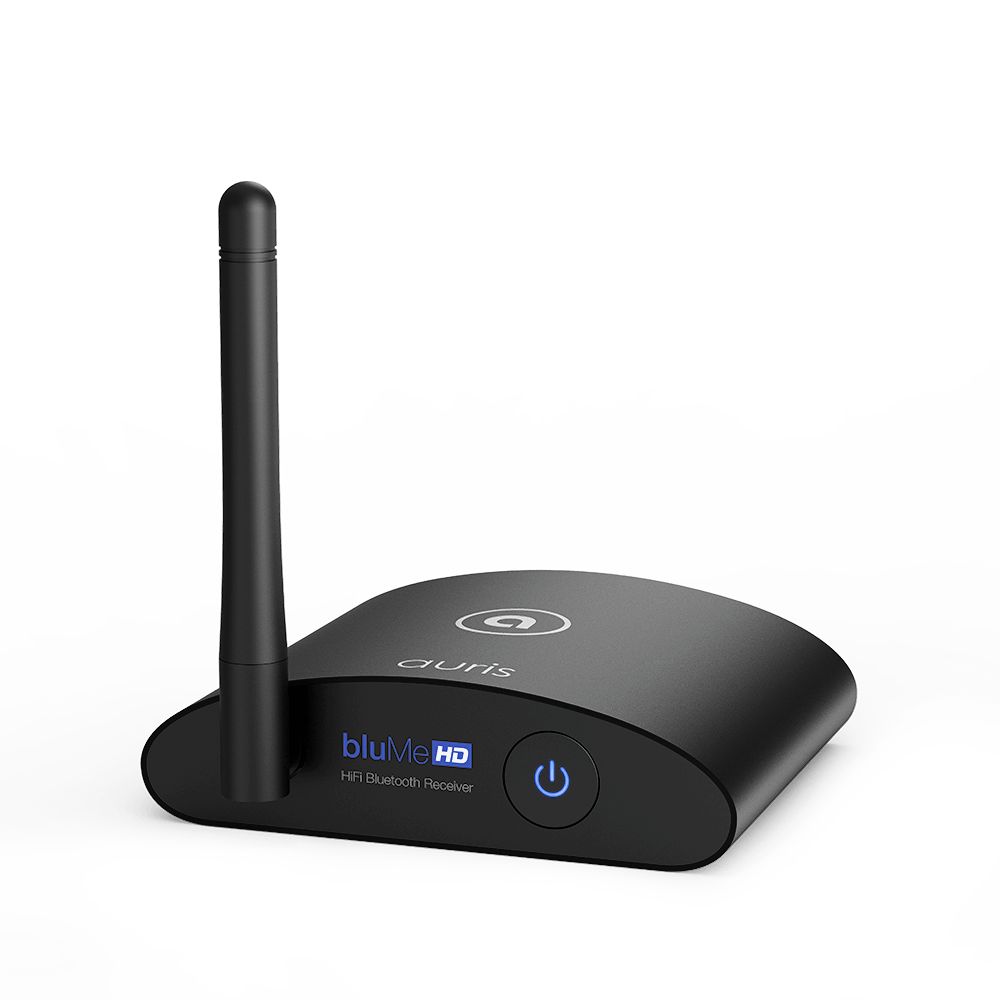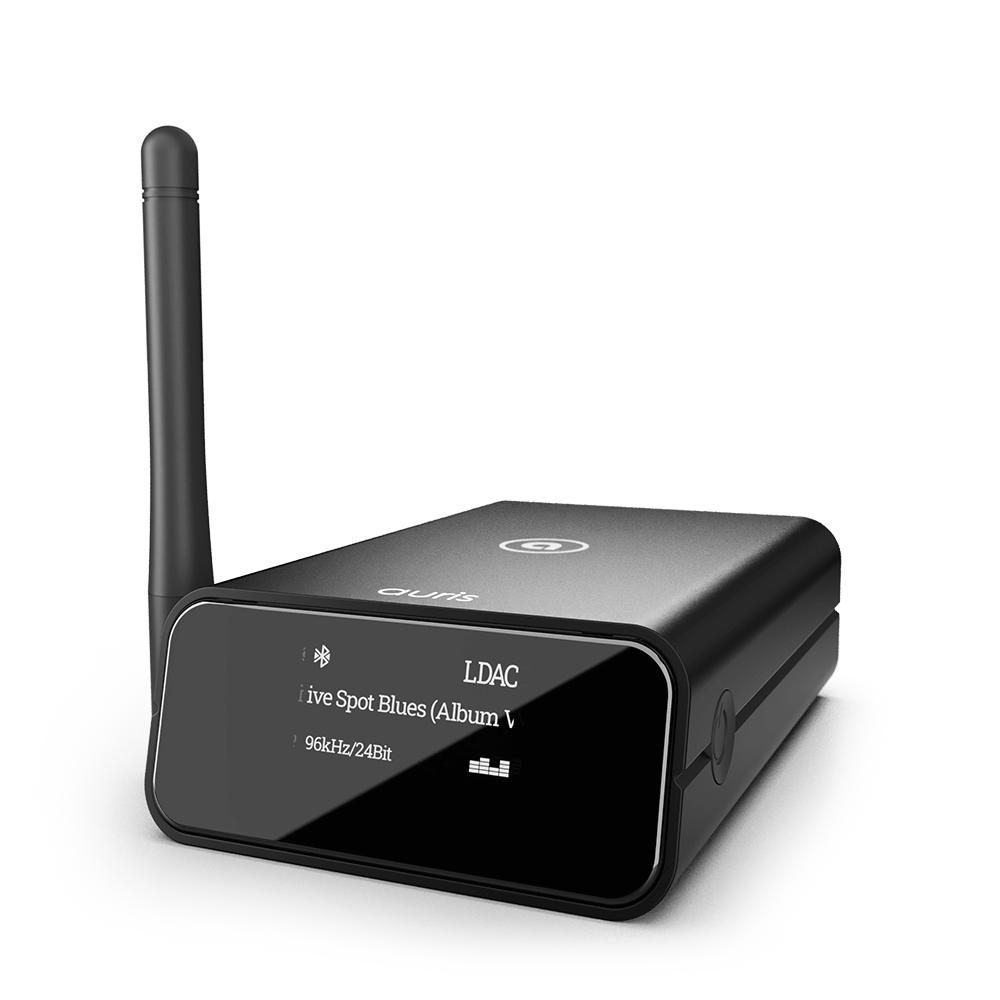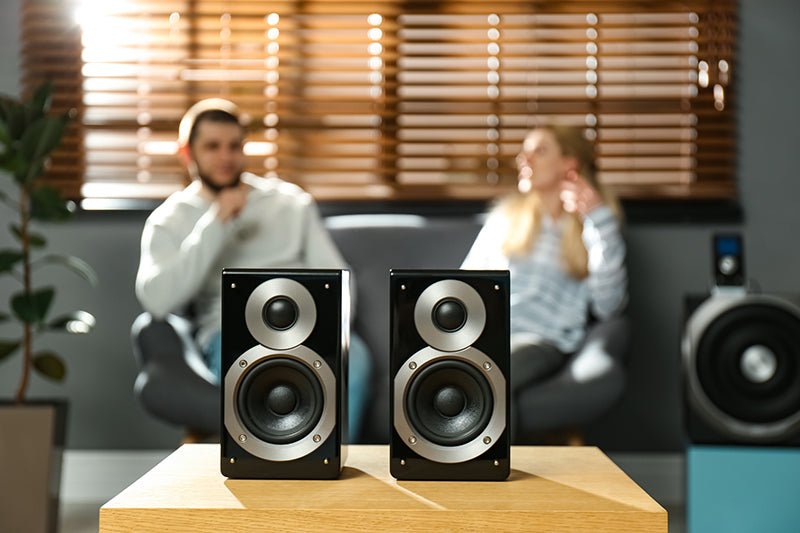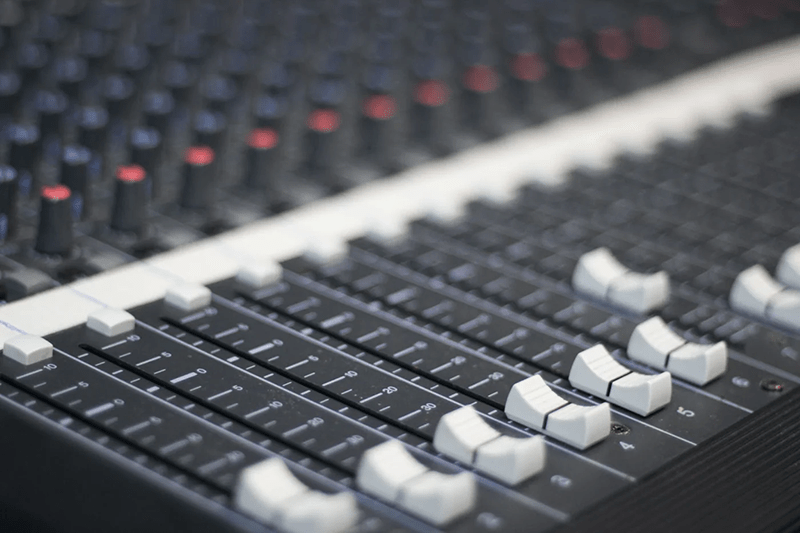
Bluetooth 5.0 has changed the way we connect. With its increased speed, range, and capacity, it has opened up new possibilities for devices to communicate with each other — wirelessly.
Wireless technology was once never even on the radar. Even when computers were first invented, cables and cords were thought to be the only ways to transfer data correctly. But since the invention of Bluetooth in the late 90s, the entire world has become completely disconnected — in a good way.
With more and more people using this technology, it’s important that it evolves to meet the standards of both developers and the general public. Fortunately, Bluetooth has continually improved its protocol since its fruition.
As we continue to use Bluetooth 5.0, it’s important to understand all of its features so that you’re buying compatible devices and making use of everything the technology has to offer.
Here is everything you need to know.
Table Of Contents
- What Is Bluetooth 5.0?
- Bluetooth 5’s Biggest Improvements
- Has the Sound Quality Improved in Bluetooth 5.0?
- What Devices are Compatible with Bluetooth 5?
- The Latest Bluetooth Versions
What Is Bluetooth 5.0?

Bluetooth 5.0 is the updated version of the wireless communication standard that was first introduced to consumers in 1999. While a lot has changed, it has always been a way of transferring data across a short radio range.
Originally, Bluetooth devices were limited to headsets and cellular phones, but you can now find wireless compatibility in keyboards, laptops, and video game controllers. However, its most popular usage is audio streaming through wireless speakers or headphones.
The core Bluetooth technology hasn’t changed despite the vast number of improvements that have been made in version 5.0 and beyond.
Bluetooth 5’s Biggest Improvements
This iteration is one of the most comprehensive updates yet, covering improvements in many different facets that the wireless protocol has to offer. However, a few features stand out as the most impressive.
Increased Range
The original Bluetooth classic, or Bluetooth 1.0, only supported a maximum range of 10 meters (about 30 feet). You’d likely experience choppy audio or disconnections when you went past that range.
However, the newest update has extended this range drastically, supporting a maximum range between compatible devices of 240 meters, or 800 feet.
This is four times the range that was supported by the previous version, Bluetooth 4.2. This iteration supported a distance of 60 meters (200 feet).
Even with obstacles or walls in the way, 240 meters is a long distance. This type of range can allow developers to engineer speakers, headphones, and other technology that can wirelessly communicate from any room in the house with ease.
Faster Speed
The previous version of Bluetooth could transfer data at 1Mbps, while version 5.0 has now doubled this speed. At 2Mbps, firmware can be uploaded and downloaded in less time than its predecessor.
While Wifi can transfer data at much faster speeds, averaging around 25 Mbps, this is a big step toward more advanced wireless technology.
Devices can actually choose between faster speeds and longer ranges. For example, wireless headphones might increase speed for high bitrate streaming, while smart home devices may opt for a longer range to communicate throughout the entire living space.
Bluetooth Low Energy
One of the biggest drawbacks of Bluetooth was how it drained the battery of its master devices, such as a phone or laptop.
While Bluetooth 4.2 introduced this concept, not every single device was compatible with the technology. For example, wireless headphones couldn’t communicate over Low Energy, which meant decreased battery longevity.
With Bluetooth 5.0, every improvement made is to the Bluetooth Low Energy specification itself. This is designed to reduce energy consumption for Bluetooth peripherals, making for reduced power usage and longer battery life.
Other Changes

Other changes have been made to Bluetooth 5.0 to make your wireless experience even better than before.
Improved Frequency Hopping
Bluetooth uses something called Adaptive Frequency Hopping. This is an algorithm that determines which radio channel to transmit and receive on, swapping channels frequently so that the data is transmitted over a wide assortment of channels. This allows data to transfer smoothly in particularly busy radio environments.
Bluetooth 4.2’s channel algorithm produced only 12 distinct sequences of channels, which isn’t optimal for applications such as audio, specifically.
But in Bluetooth 5.0, the hopping sequence is now pseudo-random, and the sequences possible are very large. This gives the newest version a much higher interference tolerance, ensuring that you’re less likely to get disconnected from your wireless device.
Dual Audio
There’s a fun new feature in Bluetooth called dual audio, which allows you to stream audio on two connected devices simultaneously.
So, if you’re ever listening to a song and want your friend to hear it too, they can connect their wireless headphones to your phone at the same time.
This means that you can also stream audio to two different speakers in the same room, making for a DIY surround sound experience right from home.
Higher Message Capacity
Bluetooth 5.0 is able to transfer packets at a rate of 255 bytes, which is extremely large. This is nearly eight times the capacity of Bluetooth 4.2, which capped out at 31 bytes. This improves the data payload, allowing for larger files to be transferred wirelessly.
Has the Sound Quality Improved in Bluetooth 5.0?

One of the biggest drawbacks of Bluetooth has always been that the sound quality is never as crisp and clear when compared to CDs or other digital/analog systems. But does this version of the protocol make any improvements?
Unfortunately not. It seems like most of the emphasis was placed on improving speed and range, which avid music listeners will still see as an immense benefit.
However, Bluetooth released a smaller update to Bluetooth 5 called Bluetooth 5.2. In this newest update, an audio codec called LC3 was introduced. This is a high-quality, low-power audio codec that provides high-quality sound at even lower data rates than the standard Bluetooth Classic SBC codec.
While this codec doesn’t match the quality of a record player, it does mean that the technology is headed in the right direction for a crisper sound.
What Devices are Compatible with Bluetooth 5?
When a new version of Bluetooth is released, developers can take some time to utilize the newest protocols in their devices. Typically, flagship smartphones like iPhones and Samsung Galaxies are the first products to hit the market with the most up-to-date versions.
With that said, Bluetooth 5.0 is backward compatible with Bluetooth 4.0.
For example, if you get the newest iPhone that supports 5.0, you can still connect a pair of headphones that run on Bluetooth 4.0, 4.1, or 4.2. Keep in mind that you won’t be able to enjoy the increased range, speed, or battery life that a 5.0 headset might be able to accomplish.
Check to see if a device is Bluetooth 5.0 compatible before purchasing to ensure that you can reap all of the benefits and improved features. Please note that Auris audio receivers are compatible.
The Latest Bluetooth Versions

As we mentioned earlier, Bluetooth constantly updates and improves, with new versions released every few years.
To give you a better picture of how far this technology has come, here’s a quick look at the Bluetooth historical timeline:
- 1999: Bluetooth 1.0
- 2001: Bluetooth 1.1
- 2002: Bluetooth 1.2
- 2004: Bluetooth 2.0
- 2007: Bluetooth 2.1
- 2009: Bluetooth 3.0
- 2010: Bluetooth 4.0
- 2013: Bluetooth 4.1
- 2014: Bluetooth 4.2
- 2016: Bluetooth 5.0
- 2019: Bluetooth 5.1
- 2019: Bluetooth 5.2
- 2021: Bluetooth 5.3
- 2023: Bluetooth 5.4
As you can see, Bluetooth 5.0 is no longer the latest iteration. So, let’s talk about the features released in versions 5.1, 5.2, 5.3, and 5.4.
Bluetooth 5.1
Released in January 2019, Bluetooth 5.1 can find an exact location within an inch. While this feature won’t affect your stereos, it has enormous implications for Bluetooth-based tracking devices.
Based on the angle of arrival and departure, Bluetooth 5.1 allows devices to track other devices in real time with very high accuracy, making it perfect for indoor navigation systems and asset tracking.
But location accuracy isn’t the only upgrade this version brought. Here are a few others:
GATT Caching
By using GATT Caching, the Bluetooth connection process is faster. Instead of having to verify your devices and their capabilities every time, your devices now remember the connection details, allowing for a seamless connection experience.
This feature is handy when reconnecting previously paired devices.
Less Lag
Sometimes, when listening to a movie with earlier Bluetooth connections, you might have noticed that the audio and video seemed out of sync. That was due to latency issues.
With Bluetooth 5.1, the latency improved thanks to a new audio codec. This codec, aptX HD, was built with audio quality in mind. If your stereo and other devices are compatible with aptX HD, you’ll notice a difference in the sound.
However, Apple devices don’t support this codec, so if you’re using an iPhone or iPod to stream from, you’ll need to make sure your Bluetooth receiver also utilizes AAC or another compatible codec.
Bluetooth 5.2

2019 brought two new versions of Bluetooth — 5.1 in January and 5.2 in December. Bluetooth 5.2 brought three significant improvements to the wireless technology.
Low Energy Power Control
With the introduction of LE Power Control, your devices will automatically optimize the power usage to help maintain the best signal strength with the least power. This feature keeps your Bluetooth devices from draining so much of your battery.
In addition, it helps reduce interference from other wireless signals in your area.
Enhanced Attribute Protocol
The Enhanced Attribute Protocol in Bluetooth 5.2 allows for more efficient data transfer and faster response times between devices. This is especially useful for transferring large files or streaming high-quality audio and video content between devices.
LE Isochronous Channels
When Bluetooth first introduced Dual Audio with version 5.0, it was limited. The new LE Isochronous Channels upgrade in Bluetooth 5.2 expands on this feature, allowing for simultaneous and synchronized audio transmission between multiple devices.
This means you can stream music to several sets of headphones at once, allowing you and your friends to listen to the same tunes. But music sharing isn’t its only application.
This technology means many people can connect to a public screen and get the information simultaneously. For instance, audience members who are hard of hearing could receive audio descriptions while watching a movie in a theater.
This opens up some exciting possibilities for accessibility and convenience in public spaces.
Bluetooth 5.3
In July of 2021, Bluetooth 5.3 was released, bringing several technological updates, including one that makes data transfers more secure.
Periodic Advertising Enhancement
This feature allows devices to save energy by identifying redundant data packets. The change results in more optimized connections between devices, improving battery life.
Safety Enhancements
Whenever you transfer data, there’s a slight risk of your information being intercepted and compromised. To combat this, Bluetooth 5.3 introduces some new encryption features, which help improve the overall security of your devices.
Connection Subrating
Your devices can use two different types of Bluetooth connections: low-duty cycle and high-duty cycle.
The low-duty cycle saves power but doesn’t transfer information as quickly. The high-duty cycle is the opposite. It takes more energy, but it transmits data faster.
With the connection subrating feature, your devices can automatically switch between the two connections based on usage. For instance, a Bluetooth headset can go to a high-duty cycle when you get a call and then return to low-duty cycle mode when you hang up.
This results in better energy management and improved user experience.
Channel Classification
To help overcome interference, Bluetooth uses adaptive frequency hopping. In this version of the tech, the central and peripheral devices work together to find a clear channel.
This helps ensure a reliable connection, even if the two devices aren’t physically close. You’ll notice less interference with this feature, which is always a good thing.
Bluetooth 5.4

Bluetooth announced its most recent iteration in 2023. Expect to see Bluetooth 5.4 compatible devices rolling out in the beginning of 2024.
This version features efficient bi-directional communication to thousands of devices simultaneously, provides better security protocols, and allows devices to indicate the security mode.
Many of these devices will be Auracast-compatible, meaning they’ll work with Auracast broadcast audio. This is like a traditional AM or FM radio that allows one device to transmit an audio signal to anyone within the transmission range.
With this tech, you won’t have to go through a tedious pairing process to pick up the audio being transmitted. Instead, you’ll select the sound you want to listen to from a list of available options, much like you do with WiFi connections.
It will be a game-changer, especially in crowded venues such as airports, malls, or theaters. Everyone with headphones will be able to listen clearly.
When Will Bluetooth 6 Be Available?
As of now, there is no indication when Bluetooth 6.0 will arrive for your wireless peripherals.
Especially since the brand new 5.4 updates brought in a slew of new improvements and features, it might be some time yet before we get to see what the next generation of Bluetooth devices have in store.
Bluetooth 5.0-5.4 Recap
Bluetooth 5.4 is the newest and most improved version of Bluetooth to date. Among its features, improved speed and extra-long battery life are some of the most impressive advancements made.
On top of that, Bluetooth 5.4 allows users to share audio to multiple devices simultaneously, letting users create surround sound speaker systems in their own homes and in public settings. Not to mention, with improved frequency hopping, you’re less likely to experience disconnections.
Most devices are now compatible with Bluetooth 5.3 and will soon be Bluetooth 5.4 compatible. However, there is also backward compatibility with peripherals functioning on 4.0-4.2.
And while there is no clear timeframe for the release of Bluetooth 6.0, version 5.4 has brought a ton of new improvements that are sure to keep techies excited for a while.
Stream Great Music With Auris

If you prefer the sound your vintage HiFi stereo system delivers, you don’t have to give it up. The Auris bluMe Pro is a premium HiFi Bluetooth Receiver that allows you to stream music to your system from your phone, tablet, or computer with Bluetooth 5.0 technology.
Simply use the included cables to connect the Auris bluMe Pro to your stereo. Then, pair it with your streaming device — like your phone — and listen to your favorite tunes.
Audiophiles everywhere will appreciate the lower latency and higher-quality transmission that comes with Bluetooth 5.0.
Why not upgrade your listening experience with the Auris bluMe Pro? You’ll get the best of both worlds — vintage sound quality and modern wireless technology.
Sources:
https://www.androidauthority.com/history-bluetooth-explained-846345/
https://www.americanscientist.org/article/random-paths-to-frequency-hopping#:~:text=Frequency%20hopping%20is%20the%20simplest,frequency%20band%20of%20a%20signal.
https://www.bluetooth.com/blog/a-technical-overview-of-lc3/
https://www.bluetooth.com/auracast/
